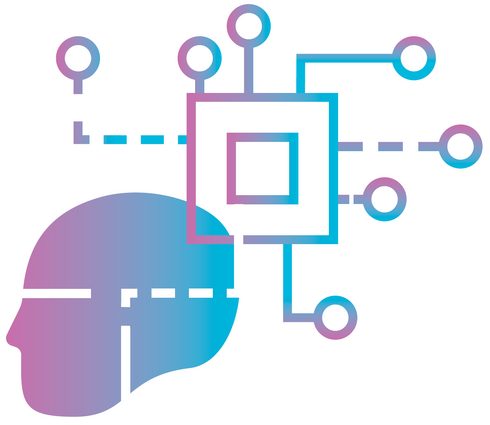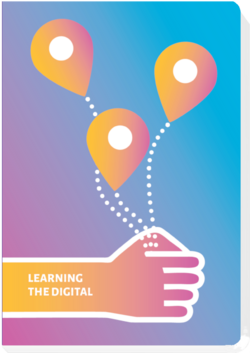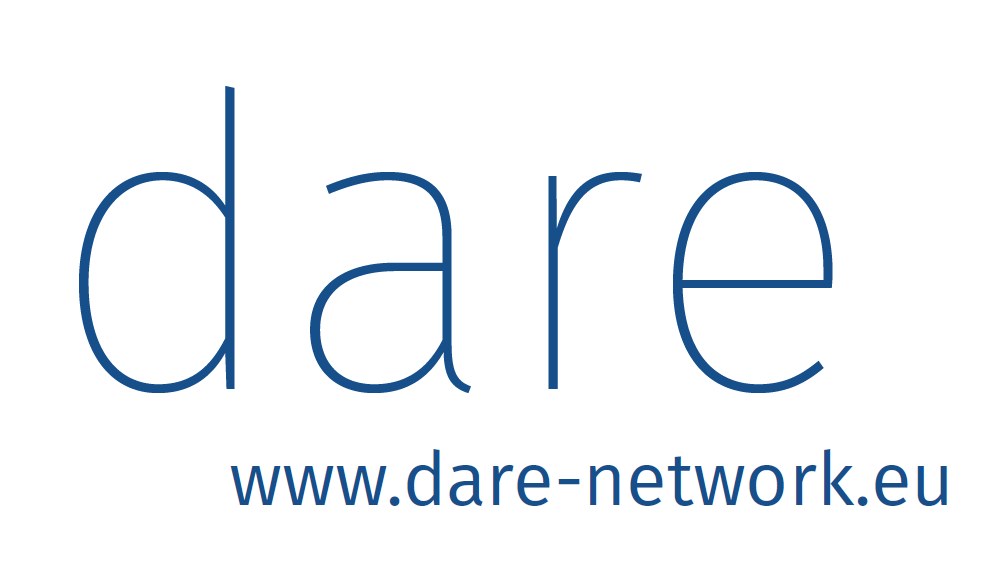Today we discuss their application in many digital services and platforms, in decision-making or in managing infrastructures. As a result, we are now vividly discussing how this technology affects our everyday lives and social roles; how they help us improve our skills and complete tasks, but also to what extent they enable us to participate in society or strengthen or impair our rights. These are questions that vitally affect the lives of people in various dimensions.
Technically, various approaches are intertwined in what is generally referred to as "AI". It is not always possible to clearly separate what is really AI at its core, especially for users. At the same time, however, this has significance for the assessment of a technology and for its regulation. A system based purely on an algorithm may be easier to control and adapt than a self-learning system. For example, one can distingish:
Contents
- 1 Algorithms
- 2 Artificial intelligence
- 3 Big Data
- 4 More:
- 5 Conclusions for Education
- 5.1 Explore:
- 5.2 Inspiration: Learning about AI and the Internet
- 5.3 Resource: AI for good in Italy
- 5.4 Resource: Getting the future right – Artificial intelligence and fundamental rights
- 5.5 Resource: Globalpolicy.AI
- 5.6 handbook for Facilitators: Learning the Digital
- 5.7 From:
- 5.8 Related:
- 5.9 Also interesting:
- 5.10 Learning the Digital
Algorithms
Set of instructions for computers, letting them conduct various tasks, as opposed to processing limited calculations. The algorithms respond to the input and might even apply themselves. Better hardware and more complex programming allows them to model complex situations and even behaviour.
Artificial intelligence
"AI system is a machine-based system that can, for a given set of human-defined objectives, make predictions, recommendations, or decisions influencing real or virtual environments. AI systems are designed to operate with varying levels of autonomy." (OECD, Recommendation of the Council on Artificial Intelligence)
Strong AI
Artificial intelligence requires these kind of complex, learning algorithms. However, one can distinguish between strong and weak AI. Strong AI works like a learning system, increasingly applying its routine, gaining insight through various data from different contexts and responding to its changing environment – the ideal of strong AI is deep learning in the way of the human brain: find information, connect these, come up with insights and new solutions (independently).
Weak AI
Most AI systems also use machine learning. However, since they do not learn deeply they are recognized as weak. They heavily rely on the algorithms humans program, improving themselves in a pre-determined way. Even if the tic-tac-toe game were to be played 1,000 times, this would not lead the underlying algorithm to invent a new game. At this point, it learns only to improve its strategy inside the rules of the game. They appear to be intelligent.
Big Data
Method of gaining insight on the basis of quantitative data by building statistical correlations and relations. It requires a variety of data types and a massive amount of data (=big) for modelling social reality (with intelligent algorithms) through statistical approximation (Mayer-Schöneberger, 2015).
More:
Conclusions for Education
EDC/HRE has the role to support learners in finding their position toward AI in their concrete digital life (for instance, as employees or users of smart services), in their social environment (for instance, in their city) and also on the system level (data strategies of their country, AI in systemic sectors like police enforcement, jurisdiction, health and social welfare). The network culture chapter elaborated already that each society has uniquely formulated how it uses technology. In this sense, before judging AI, learners need to develop a basic understanding of what AI, deep learning, algorithms and Big Data are and how they work. As such, we suggest some easy and playful entry points to the topic.
When algorithms influence or make decisions, or systems replace human decisions and human agency, it is evident that these technologies need to be embedded in a system of human and democratic governance and control. A challenge that is currently discussed relates to the question of autonomous and unbiased decision - to what extent do these systems replace human labour and intelligence. In the context of debates about social media, the concern arises, that opaque and uncontrollable algorithms might have a negative impact on the information sphere and the democratic public at large. As such, EDC/HRE-related learning is especially focused on the social impact.
“AI is not a technical thing. It’s an existential thing. Technology is immersed in culture, and culture is immersed in technology” (Iaconesi-Persico).
- What reasons favour the use and deployment of Artificial Intelligence? Economical, demographic, or rights-related ones?
- What possible benefits or conflicts might arise?
- What kind of alternatives within these technologies exist and how do these relate to democracy?
Explore:
Inspiration: Learning about AI and the Internet
Defining concepts of the digital society
Alexander v. Humboldt Institute for Internet and Society
OnlineBig Data Literacy
Resource collectuion of the Critical Big Data and Algorithmic Literacy Network
OnlineUNESCO Series on Internet Freedom
Publications on enabling a free, open and accessible Internet space as part of promoting comprehensive freedom of expression online and offline.
OnlineElements of AI
Free online course in the European languages, developed by the Finnish EU presidency
OnlineWe are AI
Free online course by the Center for Responsible AI at New York University’s Tandon School of Engineering, Peer 2 Peer University (P2PU) and Queens Public Library
OnlineVisual Introduction in Machine Learning
By Stephanie Yee and Tony Chu in 13 languages.
OnlineWe are AI Comics
Five Comics about AI by Julia Stoyanovich and Falaah Arif Kha
DownloadGlobalPolicy.AI
Online platform for navigating the international AI governance landscape
OnlineTravel Guide to the Digital World
For Human Rights defenders by Global Partners Digital. DownloadFree My Internet
A graphic journey from infrastructure to shutdowns
OnlineMaking sense of the future
by Alexander von Humboldt Institute for Internet and Society (HIIG)
Online & DownloadInternet Universality Indicators
UNESCO's Roam-X-Indicators<
DownloadDigital Transformation in Adult Learning
Project DIGIT-AL (DARE network)
OnlineFreedom of Press Report
by RSF - Reporters without Borders
OnlineDigtal News Report
by Reuters Institute for the Study of Journalism
OnlineFreedom on the Net Report
by Freedom House
Online & DownloadInternet Health Report
by Mozilla Foundation
DownloadInternet Affordability Report
Alliance for Affodable Internet
DownloadWe need to talk AI
Comic about Artificial Intelligence by Doc J Snyder & Lena Ziyal
Download
Resource: AI for good in Italy
IAQOS, community-based artificial intelligence https://iaqos.online/site/
Funded by the Italian Ministry of Culture, IAQOS is a project aiming to achieve urban regeneration through AI, data and art. The developers, Salvatore Iaconesi and Oriana Persico, introduced an AI infrastructure that was freely accessible and usable by every inhabitant of a highly multicultural neighborhood in Rome (Torpignattara), as it was pre-trained to speak and interpret 54 languages. The core of the project was to describe AI as a new actor in the community rather than as a service. In fact, the knowledge graph was always in plain sight and negotiable. A pedagogical experience was developed in primary school: the pupils described parts of their neighbourhood on the map, and the AI used a Recurrent Neural Network model to discover recurrent patterns in the descriptions so as to produce a narrative about the experience of the territory as seen from the children. The experience has been replicated in Ancona and Bolzano.
Resource: Getting the future right – Artificial intelligence and fundamental rights
This report published by the European Union Fundamental Rights Agency in 2020, presents concrete examples of how companies and public administrations in the EU are using, or trying to use, AI. It focuses on four core areas – social benefits, predictive policing, health services and targeted advertising. https://doi.org/10.2811/774118
Resource: Globalpolicy.AI
The portal is a joint effort from the Council of Europe, the European Commission, the European Union Agency for Fundamental Rights, the Inter-American Development Bank, the Organisation for Economic Co-operation and Development (OECD), the United Nations (UN), the United Nations Educational, Scientific and Cultural Organization (UNESCO), and the World Bank Group. It aims to become a one-stop shop for data, research findings and good practices in AI policy.
handbook for Facilitators: Learning the Digital
This text was published in: M. Oberosler (ed.), E. Rapetti (ed.), N. Zimmermann (ed.), G. Pirker, I. Carvalho, G. Briz, V. Vivona (2021/22). Learning the Digital. Competendo Handbook for Facilitators.
Created in the frame of the project DIGIT-AL - Digital Transformation Adult Learning for Active Citizenship.



























